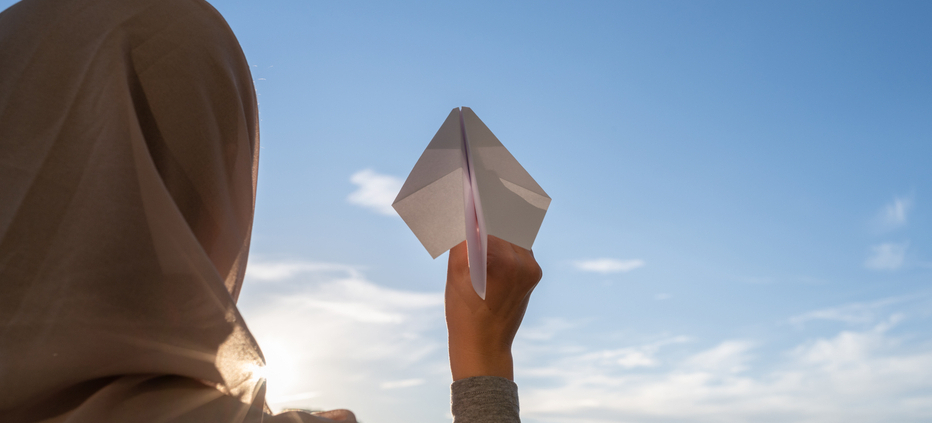How Do I Calculate the End of My Menstruation?
Hanafi Fiqh
Answered by Shaykh Yusuf Weltch
Question
For the past year, after periods, I don’t see pure white discharge. Along with white discharge, I see a slight yellowish color with it. So I wait for 10 days and then I pray. But I don’t know whether what I am doing is correct or not? I don’t know whether the yellowish color that comes with my white discharge is actually blood or it’s just the color of my natural white discharge. In this case, how should I check my sign of purity and know that my menses have ended?
Answer
In the Name of Allah, the Most Merciful and Compassionate
The menstruation is considered complete either by the lack of any discharge or the presence of a white discharge.
The female companions (Allah be pleased with them) are narrated to have said, ‘“Us women used to send our cotton pads that had a yellowish discharge on them in a small box to ‘Aisha.’ She would then say, ‘Don’t be hasty. It is not until you see pure white. (i.e. the purity that follows menstruation)’” [Bukhari]
Yellow Discharge vs. Oxidization
Due to the above principle, it is understandable why you would wait until 10 days (which is the maximum number of days for menstruation). However, it is very important that you understand the difference between a yellow discharge and a white discharge that became yellowish due to oxidization. [Birgivi; Dhukhr al-Mutahhilin]
When a woman anticipates the end of her menstruation, she should properly place a piece/strip of cotton (or the like) directly on the vaginal opening (between the labia majora). By this, she can check the cotton for any colored discharge. [Ibid.]
Now if the cotton is not securely placed directly on the vaginal opening, any white discharge when either (a) left for a long time or (b) exposed to air (oxygen) due to the cotton not being directly on the vaginal opening – the white color will be tinted to a yellowish color. This is not a yellow discharge. [Ibid.]
You should only consider the discharge’s color when/if it is fresh and from cotton that was securely placed. Any discharge that has dried up or comes on cotton that was not properly placed, is ignored. [Ibid.]
Moving Forward
Since it is not possible for you to know with certainty, what of your previous menstruations was a yellowish discharge or just oxidization, the following steps are to be taken:
Firstly, If you know what your customary menstruation length (‘Ada) was before this issue arose, consider all of your previous menstruations to be that number of days and any additional days (up to the 10 days) as days of purity. Thereafter, the prayers of any additional days in which you did not pray, are estimated to the best of your ability and made up slowly.
Now, this is based on caution, and caution is recommended. This is to ensure that you fulfill the past prayers that were your responsibility. This is based on the principle, “The goal (regarding our religious responsibilities) is to fulfill our responsibilities to Allah in a manner of certainty.” [Tahtawi/Shurunbulali, Hashiyat Maraqi al-Falah]
Secondly, if, however, you have been properly placing the cotton (as described above) and you are reasonably sure that the yellowish color is not due to oxidization, then continue doing as you have been doing. If the yellowish color continues beyond 10 days, consider the additional days as irregular bleeding and go back to your prayers.
Lastly, I would advise that you purchase the book by Ustadha Hedaya Hartford titled Coming of Age: A Muslim Girl’s Guide.
Hope this helps
Allah knows best
[Shaykh] Yusuf Weltch
Checked and Approved by Shaykh Faraz Rabbani
Shaykh Yusuf Weltch is a teacher of Arabic, Islamic law, and spirituality. After accepting Islam in 2008, he then completed four years at the Darul Uloom seminary in New York where he studied Arabic and the traditional sciences. He then traveled to Tarim, Yemen, where he stayed for three years studying in Dar Al-Mustafa under some of the greatest scholars of our time, including Habib Umar Bin Hafiz, Habib Kadhim al-Saqqaf, and Shaykh Umar al-Khatib. In Tarim, Shaykh Yusuf completed the memorization of the Qur’an and studied beliefs, legal methodology, hadith methodology, Qur’anic exegesis, Islamic history, and a number of texts on spirituality. He joined the SeekersGuidance faculty in the summer of 2019.
